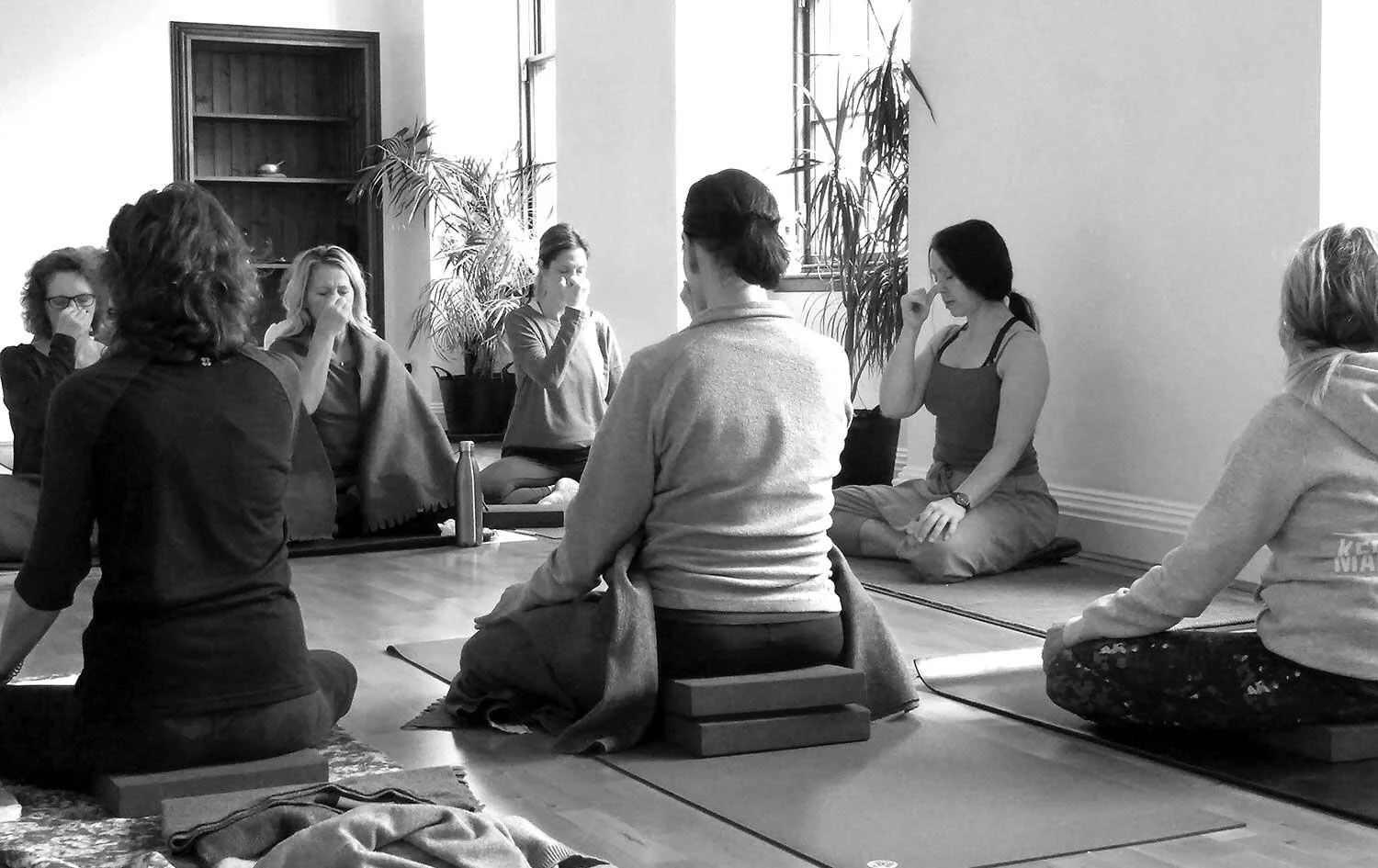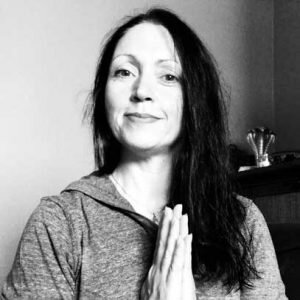Why practice Pranayama?
[Guest post by Siobhan Fitzgerald]
My first experience of pranayama was in my first ever yoga class 24 years ago. I’ll never forget how those first experiences of practice changed how I felt about myself.
Coming from a very erratic family life (albeit a comfortable childhood home-wise) produced trauma in my system at a very deep level. In my teens it lay buried and unnoticed. I ignored my own needs and put others first. My behaviour was destructive in many ways I wasn’t aware of. I even thought I was surviving and doing well.
I’ve practised with my esteemed teacher for 16 years now. Through him pranayama has slowly penetrated deep into my system. My whole body has become one that is purified and that in turn enhanced how my mind works. My mind encouraged my systems to synchronise and bad habits vanished. Insomnia, eating problems, low moods, anxiety and hormonal problems – all gone.
Siobhan practising alternate nostril breathing
I knew I was never going back to who I had been before because I loved who I had become. That’s priceless and is the beauty of having pranayama in my life.
Why would I ever want to give up something that makes me feel so alive, that allows me to feel and touch inner joy and rewards me with such a great life. It’s not been without its struggles, but they’ve made me accept them as part of my own journey rather than allowing them to pull me down.
Pranayama is a beautiful thing and the health benefits are infinite.
What is Pranayama?
I’m often asked “What is pranayama? Why should I make time to practice it?”
Pranayama is a way of exercising control over the breath or vital force (prana) in our body by working through different practices that have been around for thousands of years. Proof in itself that it’s still very good for us today!
What’s Pranayama all about?
Pranayama is the fourth limb of the eight limb (astanga) yoga system. We begin slowly and gradually, learning to tame our breath and bring it more and more under our own control.
Siobhan using pulse diagnostic techniques
We practice making the breath longer on inhales and exhales; we pause and make it stop for (short) periods of time; and we create a new inner, and far more profound and deeper, connection with our self. This in turn has its benefits, especially in today’s society.
If we can build strength in our lungs and our nerves, we can ultimately master our thoughts or become much more positive and grounded and much less reactive. Life changes as a result and we may even feel a subtle rise above the things we once got upset about.
We eventually learn to master our emotions. Our new found energy and happiness is infectious and we touch the hearts of those around us.
What can students expect?
We start slowly and we increase what we do in our practice in stages, working on safely taming our inner emotions and bringing ourselves into a better state of being. Practice can be long or short. We can focus on a health issue such as HBP or anxiety or not. It has so many uses that a pranayama practice can help every person in a way that’s individual to them.
Immediately what we feel is calm and reduced chatter in our heads. This helps us feel clearer in our thoughts. We may feel very happy or feel other emotions that are usually buried deep inside. When we practice even a little everyday we start our day on the right foot, in a positive frame of mind and it can stay with us all day long.
Over time we become much more resilient to the drama of life around us, our heart rate lowers and our lung capacity increases. We become happier inside. Our biorhythms gradually start to synchronise helping to enhance our hormones and nerve response and destroy toxins in our cells.
It’s a fast track to our mental and physiological wellbeing!
Learn & practice Pranayama with Siobhan
Siobhan has been a Yoga teacher over 20 years and is studying advanced Pranayama at the Kaivalyadhama Yoga Institute in Lonavla, India. With the close of this four year study programme and 15 years of study and practice with her teachers Sri O P Tiwari and Sudhir Tiwari, Siobhan is looking forward to working with you in a very specialist way assisting in your own personal growth through the breath.
Siobhan teaches a monthly pranayama class here at MCY. Get the upcoming dates and book your place here
PS If you’ve found this post of interest please share as other people you know may find it interesting too…




